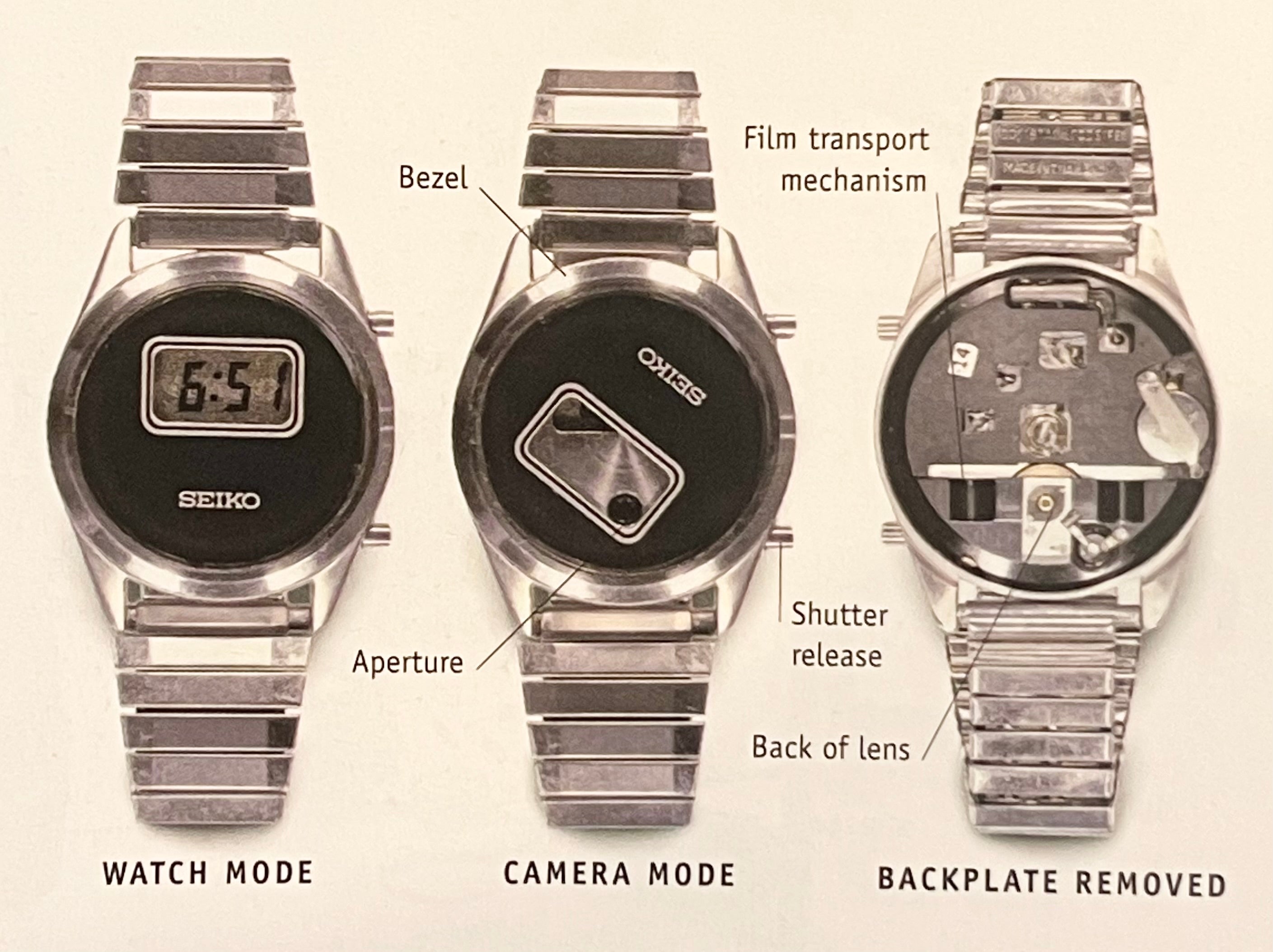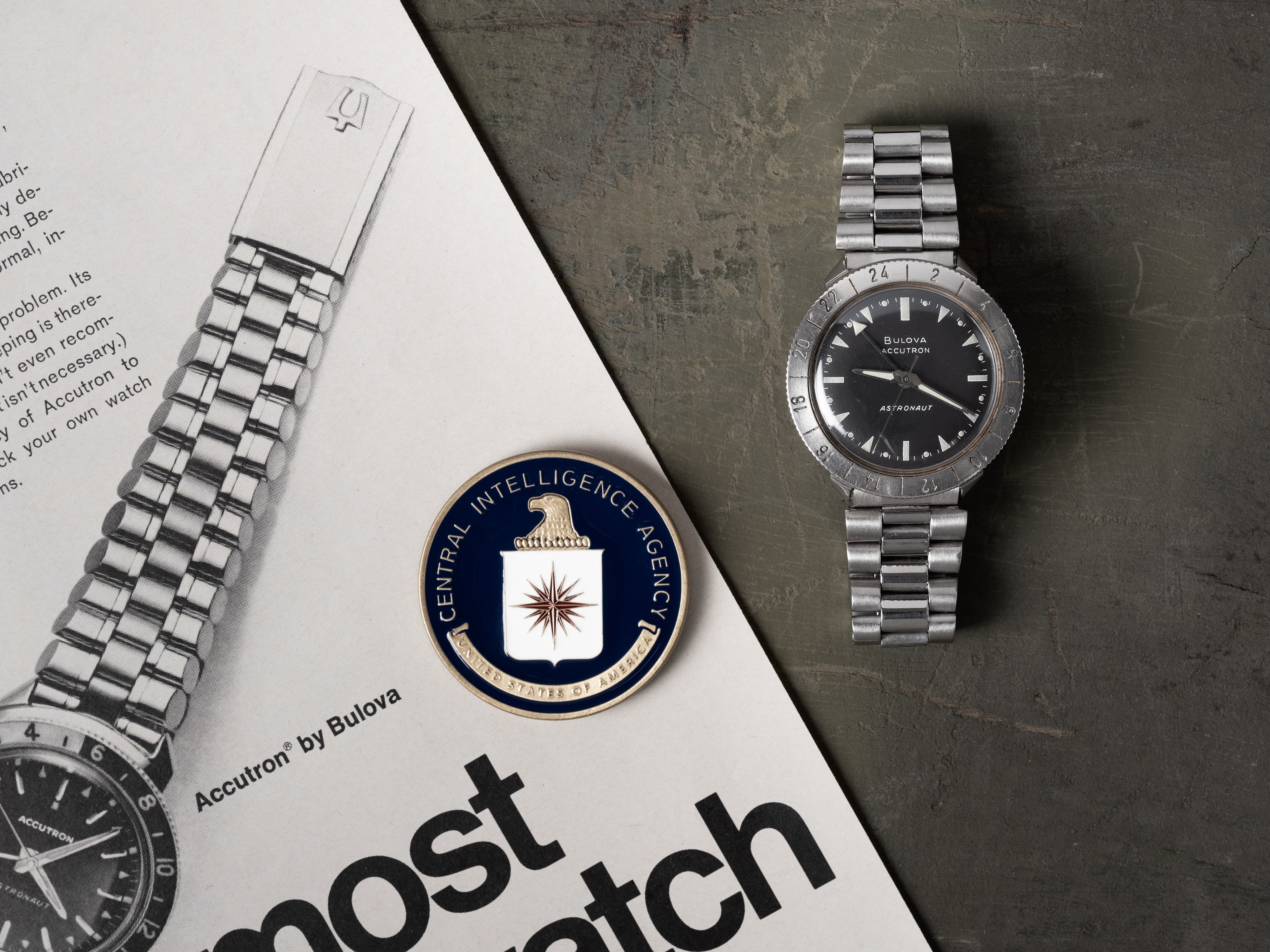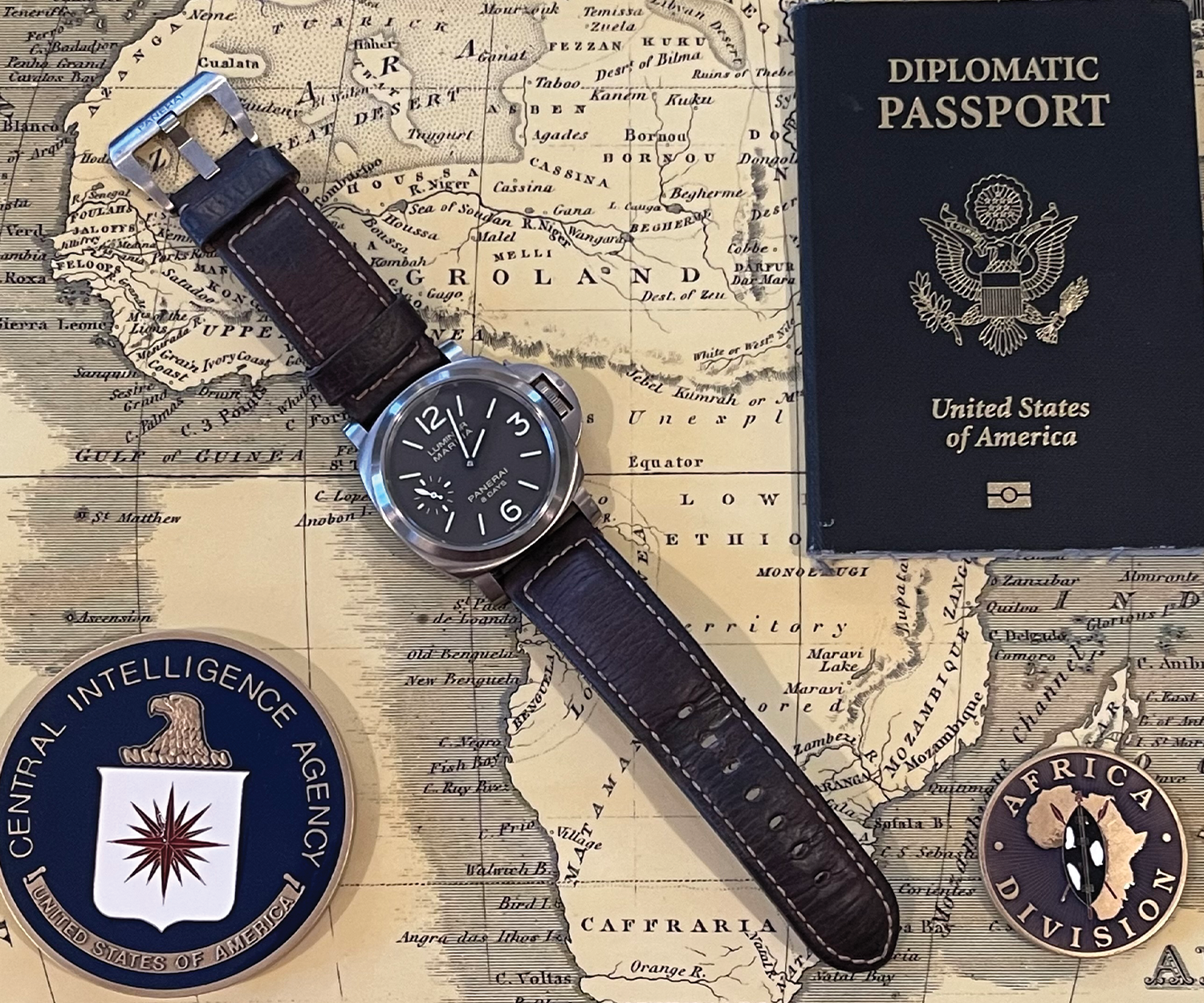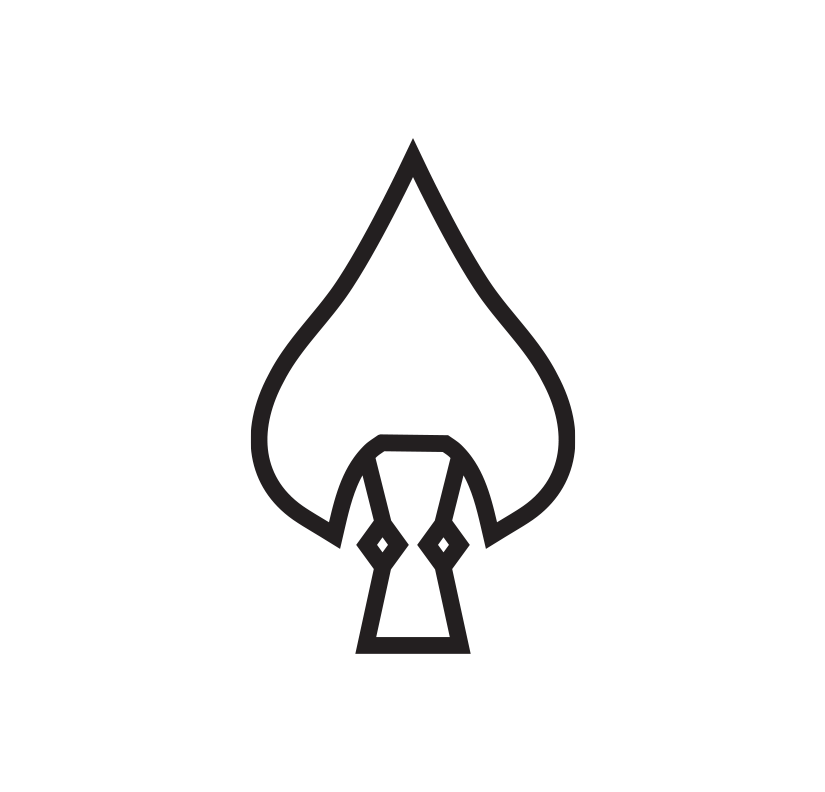WOE Dispatch

Forget Bond, A Real CIA Spy Seiko Watch
In the 1970s, CIA Technical Officers modified a digital Seiko to conceal a Tropel T-100 camera inside. The purpose of the watch-turned-espionage-tool was to allow...
Read OnIn the 1970s, CIA Technical Officers modified a digital Seiko to conceal a Tropel T-100 camera inside. The purpose of the watch-turned-espionage-tool was to allow a recruited agent to surreptitiously photograph classified documents in their place of work and deliver them to CIA. The camera was so quiet that it could be used to photograph documents within a KGB Rezidentura or other sensitive buildings while unknowing co-workers were just feet away. The Silver Screen vs Reality: Hollywood's depiction of spy gadgets embedded in a Rolex Submariner or Omega Seamaster is entertaining, but largely a fantasy of the screenwriter's imagination. In fact, there were very few times in my career as a CIA Case Officer that I used “spy gear” and instead largely relied on low-tech tradecraft to build relationships, recruit spies, and steal secrets. US Embassy Moscow- Cold War That said, technology plays a significant role in the espionage trade from both an offensive (collection) and defensive (counterintelligence) standpoint in the modern era. Historically, spy gadgetry was a crucial tool in the “great game” of the Cold War where both the Soviet Union’s KGB and CIA leveraged cutting edge technologies– including miniature cameras and audio recording devices– to collect intelligence and thwart hostile surveillance. In order to mask these capabilities, pieces of surveillance technology were often housed in “Concealment Devices,” seemingly benign objects that could be carried by the Agent into sensitive government facilities. In some now-declassified cases, a timepiece was used as either a passive or active concealment device to hide the presence of the espionage tool. U.S. Representative to the United Nations Henry Cabot Lodge Jr. points to a hole for a concealed listening device in the U.S. Great Seal (a gift from the Soviets to the UNSC). (Photo Credit: Getty) In the niche genre of Watches of Espionage, it is important to understand these historical references. We will periodically profile some of these watches, their relevance, and the impact they had on intelligence collection. The Real Q-Branch: In most spy movies, there is a “Q:” a fictional character responsible for providing the lead “spy” with the latest and greatest technological advancements. In obvious foreshadowing, the issued gear (often a luxury timepiece with spy gear embedded) will later play a significant role in the movie during a pivotal scene where the spy escapes a deadly situation or finally gets even with the villain. While I never met an individual “Q” at CIA, there are several offices dedicated to developing, testing, and fielding technologies for intelligence collection. During the Cold War, this office was known as the Office of Technical Service (OTS) positioned within the Directorate of Science & Technology (DS&T). Modified Seiko Housing T-100 Camera: In the mid-1970s OTS technical officers reportedly modified an off-the-shelf Seiko LCD-equipped model (reference unknown) to conceal a Tropel T-100 camera inside. The watch worked by “active concealment,” meaning it functioned normally when the camera lens was not visible. When the asset–or a recruited agent–rotated the dial nearly 180 degrees it exposed the aperture at the 6 o'clock position. A button at the 4 o'clock position activated the shutter to take the picture. (Photo Credit: Ultimate Spy, Keith Melton) According to intelligence historian Keith Melton, the camera held a 15-inch strip of auto-advancing film and could capture 100 high resolution images. The purpose of the tool was to allow an asset or agent to surreptitiously photograph classified documents in their place of work. The camera did not require an auto-focus mechanism and could effectively take pictures of standard-sized documents when held approximately 11 inches off the desk, which was about the length of an average adult male's elbow to hand. The camera was so quiet that it could be used to photograph documents within a KGB Rezidentura or other sensitive buildings while unknowing co-workers were just feet away. OTS produced instructions showing an Asset how to use the T-100 key fob model. Instructions also showed agents “how to hide the camera in a fist held to the forehead while seated–as if they were reading, not photographing.” (Photo Credit: Ultimate Spy, Keith Melton) While the watch concealment is interesting in itself, the T-100 subminiature camera was the real technological feat at work. Despite its size, it was designed to take distortion-free images the size of a single page of text using retired stock film first used in spy satellites. In contrast to the movies, where a piece of gear was issued “just in case,” the tiny camera was purpose-built for intelligence collection and issued only to the most sensitive CIA assets operating behind the Iron Curtain. The tool was designed and produced by an outside contractor who painstakingly assembled the shutter components and lenses the size of a pinhead. As Robert Wallace and Melton would later recall in Spycraft, the Secret History of the CIA’s Spytechs, “the T-100’s assembly was closer to watchmaking than any commercial manufacturing process. The owner of the company fabricated each camera himself under a large magnifying glass and halo light using a device he built specifically for the task.” T-100 concealed in cricket lighter (Photo Credit: Ultimate Spy, Keith Melton) Looking at the watch, it’s tempting to conclude that it looked semi-futuristic for the 1970s and that this might cause counterintelligence concerns for an asset back then. But the Seiko was created, or modified, during an important time in horology history: the Quartz Crisis. During the Digital Revolution of the late 1960s, the development of the quartz watch resulted in a transition in the market from mechanical watches to quartz movements and eventually, digital displays with the Pulsar in 1972. This quick shift was dubbed the “quartz crisis,” where many consumers moved to the cheaper more accurate timepieces and there was a dramatic decline in the traditional, mechanically-driven Swiss watch industry. Seiko, credited with developing the first quartz movement, was one of the first brands to embrace the new technology and produced several LCD screen watches similar to the one used by CIA. While we have not identified this exact reference, there are several Seiko watches from the era that match the similar design, including this 1975 Seiko 0114-0010 Quartz LC. The exact reference likely would have been procured in the Soviet Union before being shipped back to the U.S. for modification, so as not to raise questions why a Soviet official would be wearing an imported watch. Again, details matter. 1975 Seiko 0114-0010 Quartz LC (Photo Credit: Ebay) Interestingly, it was in this time period (in 1977) that the Bond franchise integrated the first Seiko into the mix in The Spy Who Loved Me. Bond, played by Roger Moore, wore a modified Seiko 0674 LC, which contained a miniature printer to receive messages from his headquarters in the UK. CIA has been known to take inspiration from Hollywood, and whether this was life imitating art or the other way around, we can only speculate. What is uncertain is whether the CIA-modified Seiko was actually used by an asset during the Cold War or if this was a prototype that never made it to the field. While much of the information from this time period has been declassified or leaked, there is no public information available indicating it was issued to an asset for operational use. What we do know is that the camera itself, the T-100, was particularly effective at collecting intelligence and was dubbed by some as the "camera that won the Cold War." There are documented examples of both the T-100 and later the T-50 being issued to assets housed in fountain pens, keychains and lighters and capturing images that were later passed on to the CIA handling Case Officer. Tropel Camera Housed in Fountain Pen, Image courtesy of International Spy Museum. READ NEXT: The Lasting Legacy Of The CIA’s Lockheed A-12 And The Watch That Served It This Dispatch has been reviewed by the CIA’s Prepublication Classification Review Board to prevent the disclosure of classified information.
Read On
The Lasting Legacy of the CIA’s Lockheed A-12 and the Watch That Served It
In 1957 Clarence “Kelly” Johnson, the leader of aircraft manufacturer Lockheed’s Advanced Development program dubbed Skunk Works, knew satellites would make reconnaissance aircraft obsolete in...
Read OnIn 1957 Clarence “Kelly” Johnson, the leader of aircraft manufacturer Lockheed’s Advanced Development program dubbed Skunk Works, knew satellites would make reconnaissance aircraft obsolete in the near future. It was determined that the U-2 spy plane, which Johnson had worked on, had a radar cross section that was simply too large to operate completely undetected. Three years later one flown by pilot Gary Powers would be shot down in Soviet Airspace and he would be captured and charged with espionage. The price of human life was simply too high to pay, and with the Cold War in full swing, US intelligence-gathering operations were necessary to keep an edge over the nuclear-capable Soviets. This meant that significant investments were being made in satellite technology to solve these problems, but the technology wasn’t quite where it needed to be just yet. That day would come, but the impending obsolescence of aircraft built for reconnaissance didn’t stop Johnson from spearheading one last effort: Project Oxcart. Richard Bissell was the CIA officer responsible for facilitating the successor to the U-2. He oversaw Project Gusto, which was a committee set up to explore all possible solutions to the dynamic need for a next-generation aerial reconnaissance platform. Lockheed’s submission won out over Convair’s designs derived from the B-58 Hustler, and the A-12 project was funded and kicked off. The A-12 had its maiden flight on April 25th, 1962, and subsequently carried out 2,850 test flights before its first official mission on May 31st, 1967. Ironically, the A-12 never carried out any overflights of the Soviet Union or Cuba, which is exactly what it was intended for. The CIA found another use for the plane: to spy on North Vietnam. Departing from Kadena Air Base in Japan, the A-12 performed 22 sorties gathering intelligence on the movements of North Vietnamese forces. The project wasn’t all for naught, however. The development of the A-12 led to the creation of the SR-71, the often-celebrated and easily recognizable icon that’s wrongly dubbed “the fastest airplane ever to have graced our skies” even though that honor officially belongs to the A-12 at just over Mach 3.3. While the A-12 was born and died in secrecy being owned and operated by the CIA, the SR-71 was the product of the USAF. Both carried out surveillance overflights, but the SR-71 was fit for a wider range of missions, not to mention a two-seat configuration for a reconnaissance officer. The plane featured a modular system in the nose-mounted equipment bay that allowed for ELINT and SLR data to be collected. ELINT is electronic intelligence, while SLR is side-looking radar, and the added benefit of gathering additional intelligence meant that the SR-71 had a much longer service life and participated in just about every single conflict up until 1989, until they were retired. The A-12 on display at CIA Headquarters — number eight in production of the 15 A-12s built — was the first of the operational fleet to be certified for Mach 3. No piloted operational jet aircraft has ever flown faster or higher. (Photo Credit: CIA) And that’s why it has become perhaps the most prominent military aircraft ever produced. It’s become a symbol for superlative, next-generation technology and a very specific can-do attitude of the mid-century era that simply doesn’t exist anymore. Budgets be damned, the Blackbird was going to be the most capable airplane ever. And it was. It’s a flying superlative. However, the watch that’s most typically associated with the A-12 is anything but iconic, instead it’s been relegated to enjoyment by a very niche community of die-hards. Although what it lacks in popularity it more than makes up for in technical prowess. The Bulova Astronaut was a perfect horological fit for the A-12; both platforms were so far ahead of their time that neither of the core technologies they introduced stuck around long after they were gone. The Astronaut used the Accutron tuning fork movement, which predated quartz and proved to be accurate to one second a month. It didn’t have a balance assembly (or mainspring), instead it used a tuning fork oscillator that vibrated at 360hz. If we think in terms of a “propulsion system,” the tuning fork movement was congruent to the SR-71’s J58 engine that pioneered a system that essentially turned it from a standard jet engine at lower speed to a ramjet engine above Mach 2. Bulova Accutron Astronaut, late 1960s (W.O.E.s Personal Collection) Both the tuning fork mechanism and the J58 were engineering marvels that excelled at capturing and controlling energy and bending it to humankind’s will. The Bulova Accutron Astronaut even emits a high-pitch whine that’s straight out of a sci-fi movie. The advantage of the tuning fork movement for an A-12 pilot is that there isn’t a balance spring that G forces would be able to affect, and in an airplane that can go over Mach 3, G forces are a crucial concern for a mechanical watch. Accutron movements proved effective and reliable for most of NASA’s cockpit instrumentation in the Gemini rockets, and later, the Apollo program. The CIA supplied the A-12 pilots with the Bulova and when the program ended, the watches stayed with the pilots. Vintage Watch Advertisement, 1969 (W.O.E.s Personal Collection) In typical CIA fashion, the Agency cared nothing about the absolute technical and engineering achievement of both the A-12 and the Bulova Astronaut. They were tools to get the mission done. If there was a cheaper or more effective tool available to execute the mission, those would be chosen, and eventually, they were. Quartz watches replaced the tuning fork movement, and more conventional propulsion systems were favored over the complex retracting inlet cone system that allowed Mach 3+ flight on the Blackbird. The existence and disappearance of both these technical marvels serves as a reminder that no matter how much we romanticize or idolize incredible technology, it’s all in service of a larger mission: Giving America a competitive advantage when it comes to national security. The rest is just an added bonus. Read Next: Man O'War And The Horological Symbols That Inspire Us
Read On
Digital Watches of Espionage, The Role Watches Played in the Early Days of the CIA's War in Afghanistan
by J.R. Seeger For this week’s Dispatch, former senior CIA Case Officer J.R. Seeger writes about the role his watches played in the early days...
Read Onby J.R. Seeger For this week’s Dispatch, former senior CIA Case Officer J.R. Seeger writes about the role his watches played in the early days of the conflict in Afghanistan. As Seeger outlines, watches are tools, and one should choose the best tool for the job. In the world of espionage, the tool is not always a Rolex. We often worry that W.O.E. gives the perception that every Case Officer, Navy SEAL or Special Forces operator is running around the world with a luxury timepiece on their wrist. While that is largely the focus of this platform, the truth is many of the best practitioners rely on digital tools to accomplish their task. Sometimes cheap, reliable digital watches are the best tools for espionage. Digital Watches of Espionage - The Role Watches Played in the Early Days of the CIA’s War in Afghanistan October 2001: I was the team leader on one of the first CIA teams into Afghanistan. Other, more articulate writers have related the story of our team and work with US Special Forces. 12 Strong by Doug Stanton and First Casualty by Toby Harnden are detailed accounts of the Fall of 2001. Instead, this is a short essay about the watches I wore during that deployment behind the Taliban lines in the Fall of 2001. For most of my deployments in the 1990s, I wore either a Timex Ironman or a Casio G-shock. My watch choice was based on two requirements: accurate timekeeping and low cost. During travels in the Middle East, South Asia, and Central Asia, the idea of wearing something other than an expendable watch was out of the question. Plus, my only “good” watch, a 1971 Bulova Deep Sea Chronograph, was engraved with my initials, not always something you want on your wrist when you might be someone else. CIA’s Team Alpha Prior to Insertion into Afghanistan. Seeger Back Row, Third From Left As the team headed to our intermediate stop in Uzbekistan, our level of kit was minimal. I often say our team picture (above) looks like eight bikers with Kalashnikovs. Jeans, work shirts, boots and fleece jackets, weapons, radios and money. Everything you would need for a successful trip into a war-zone. During my pack-out, I didn’t pay any attention to the watch on my wrist. Of course, I should have realized that I was probably pushing the envelope on the battery in my Timex, but I had a couple of other things to worry about as we designed a campaign plan for five provinces in Afghanistan. As we completed our final briefings in isolation at Karshi Khanabad Airbase (aka KKUZ), I realized my watch had quit. No warning. Just a blank screen. Less than ideal when precision is required. Casio F-91W, w/ AKS-74U (Photo Credit James Rupley) One of my teammates laughed and said, “Boss, you forgot that two is one and one is none.” He reached into his ruck and pulled out a Casio F-91W. Probably the least expensive piece of kit in all our inventory. He tossed it to me, and it went on my wrist. A cheap watch is better than no watch at all! We loaded into MH-60 helicopters in the early morning of 16 October for our insertion. That’s a story that has nothing to do with watches. Lessons: - two is one and one is none- you may never know when a piece of kit is going to be essential Tool Watches as Operational Gifts to Afghan Warlords In November 2001, we were in a consolidation phase of the effort to defeat the Taliban. By this time, we had consolidated the two teams, Alpha and Bravo and had a full complement of eleven to handle the region. We often split into buddy teams to travel with our Afghan and Army Special Forces colleagues, hunting Taliban and building tribal alliances. Early in November, in one of our parachute resupplies, I received a Suunto watch - an early version of the Suunto tool watch series. Someone on the team decided I needed a better watch and put in the request. The early Suunto watches were large plastic timepieces that served as a compass, thermometer, and barometer as well as the standard multiple time zones display, timers and alarms. It was a bit more of a commando watch than I thought I needed, but I was certainly ready to use it. It was big and regularly got caught on rucksack straps as we loaded on horseback and/or trucks. Still, it was light and had a large display. At 47 with already aging eyesight, I was ready to enjoy a larger screen. “Suunto on my wrist in the Darya Suf Valley”, J.R. Seeger pictured left, (Photo Credit: Toby Harnden/Unknown) In mid-November, two of us went with Afghan warlord and then CIA partner - Abdul Rashid Dostum on a tour of the Uzbek region of Northwestern Afghanistan. More than anything else, it was a “victory lap” for our Uzbek ally and that meant traveling miles on dirt roads between Sheberghan and cities and towns in northwest Afghanistan. A Toyota Land Cruiser for us, two Toyota Hi-Lux pickups for the security detachment. Washboard roads punctuated by public events made for a very long ride. At the end of the day, Dostam decided to take a shortcut by traveling on what he said was an old smugglers’ trail running through the desert and ending back in Sheberghan. We were all tired and dozed off as the headlights of the Toyotas cut through the dust raised by our vehicles. I don’t know exactly what woke me from my dozing, but when I finally cleared my head, it seemed like I recognized the terrain. Of course, desert terrain is not all that distinctive, so I would have been willing to accept the fact that it was a trick of memory and fatigue. Still, I used the Suunto compass feature to check our heading. After twenty minutes, I realized we were slowly circling a prominent hill. The drivers were following a track that circled the hill. The compass showed our heading. Sheberghan was east. We were going north, then west then south…. Well, that was enough to convince me we were lost. Seeger Center, Dostum looking at him, Casio F-91W (Photo Credit Unknown / Toby Harnden) I woke up Dostum. He was incredulous. There was no way we could be lost on his turf. I took off the watch, showed him the compass readings. He was furious. This was smugglers’ country. Wandering about might not get us in a battle with remnants of the Taliban, but it certainly could get us in a firefight with smugglers. Dostum put the watch on his wrist, dope slapped his driver, and took charge of the navigation. Dostum wore the Suunto for the rest of our time in Afghanistan. I wore the F-91W for another two years and then switched to a G-shock. At the end of the day, a good tool watch is important. What you need depends on where you are. Today, I have far more watches than I need. Most of which are inexpensive mechanical tool watches and I enjoy wearing them. I recently had the 1971 Bulova serviced, and it will remain a cherished possession. But, I still have an F-91W in the inventory – just in case. Seeger and Dostum on the night of insertion, 16 October 2001, Casio F-91W on J.R. Seeger’s wrist. (Photo Credit: Unknown Toby Harnden) J.R. Seeger served as a paratrooper in the 82nd Airborne and as a CIA officer for a total of 27 years of federal service. He served 17 years in multiple field assignments focused on counterterrorism, counterintelligence and irregular warfare. During his final, 3-year assignment in CIA Headquarters, he first served as a chief of operations for a geographic division in the Directorate of Operations and then served as a deputy director and deputy chief of the CIA Counterterrorism Center. Seeger led multiple, small unit teams during his service, including leading one of the CIA teams that infiltrated into Afghanistan after 9/11. Since his retirement, J.R. has written articles and book reviews in the CIA professional journal “Studies in Intelligence” and the T.E. Lawrence Society newsletter. His seven-part MIKE4 series is about a family who have served in the special operations and intelligence community from World War II to the present. This newsletter has been reviewed by the CIA’s Prepublication Classification Review Board to prevent the disclosure of classified information. Further Reading:CIA’s JAWBREAKER Team And A Rolex Submariner
Read On
CIA Case Officer Reveals The Connection Between Watches and Espionage
A Former CIA Case Officer Reveals The Surprising Connection Between Watches and Espionage Luxury timepieces play a significant role in the murky world of spycraft...
Read OnA Former CIA Case Officer Reveals The Surprising Connection Between Watches and Espionage Luxury timepieces play a significant role in the murky world of spycraft – just not the way they're portrayed in Hollywood. (Originally featured in Hodinkee.)
Read On